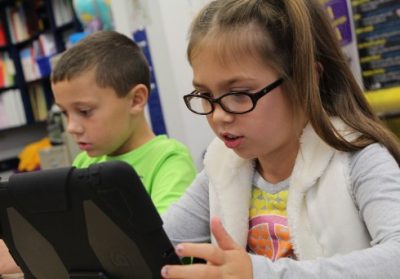
State legislation related to dyslexia intervention often contains language mandating use of specific approaches or types of approaches.
The What Works Clearinghouse is a project of the U.S. Department of Education’s Institute of Education Sciences. It reviews and evaluates research tied to specific school-based educational programs, tied to various criteria. You can use the links below to find more information, including the intervention reports issued for each program.
The page contains links to reviews of research studies which meet “Students with a Specific Learning Disability” protocols for literacy outcomes, including alphabetics, reading achievement, comprehension, reading fluency, and writing achievement. This protocol focuses on interventions designed for use in a school-based setting with students in grades K–12 with a learning disability. The protocols also require that research be conducted in the U.S. and published in English.
For more detailed information about these protocols, see:

- Students with a Specific Learning Disability Evidence Review Protocol
- Institution of Education Sciences - What Works Clearinghouse
Programs with Potentially Positive Effects
The programs listed below are supported by research evidence that the intervention had a positive effect on outcomes with no overriding contrary evidence.
- Peer-Assisted Learning Strategies-
PALS was found to have potentially positive effects on reading fluency and reading comprehension and no discernible effects on mathematics for students with learning disabilities. (4 studies met standards; June 2012)
- Read Naturally®-
Read Naturally® was found to have potentially positive effects on writing and no discernible effects on reading fluency for students with learning disabilities. (2 Studies Met Standards; Small Effect Size; July 2013)
- Self-Regulated Strategy Development-
Based on evidence from single-case design studies, SRSD had potentially positive effects on writing achievement for students with a specific learning disability. (9 Studies met Standards; November 2017)
- Repeated Reading-
Repeated reading was found to have potentially positive effects on reading comprehension and no discernible effects on alphabetics, reading fluency, and general reading achievement for students with learning disabilities. (3 studies met standards; May 2014)
- Spelling Mastery-
Spelling Mastery was found to have potentially positive effects on writing for students with learning disabilities. (2 studies met standards; January 2014)
Programs with Mixed Effects
These programs are supported by research evidence that the intervention had a positive effect on some outcomes but a negative effect on others.
- Lindamood Phoneme Sequencing® (LiPS®)-
LiPS® was found to have potentially positive effects on alphabetics, reading fluency, and math, no discernible effects on reading comprehension, and potentially negative effects on writing for students with learning disabilities. (1 Study Met Standard; March 2010)
Programs with No Discernable Effects
These programs are supported by research, but the evidence did not show any benefit to the students receiving the program.
- Reading Mastery-
When compared to another Direct Instruction intervention, Horizons, Reading Mastery was found to have no discernible effects on alphabetics and reading comprehension for students with learning disabilities. (1 study met standards; July 2012)
- Project Read® Phonology-
Project Read® Phonology was found to have no discernible effects on general reading achievement for students with learning disabilities. (1 study met standards; July 2010)
Programs with Insufficient Research
For the programs listed below, no studies falling within the scope of the Students with Learning Disabilities review protocol met What Works Clearinghouse (WWC) evidence standards. The lack of studies meeting WWC evidence standards means that the WWC was unable to draw any conclusions based on research about the effectiveness or ineffectiveness of these programs for students with learning disabilities.
